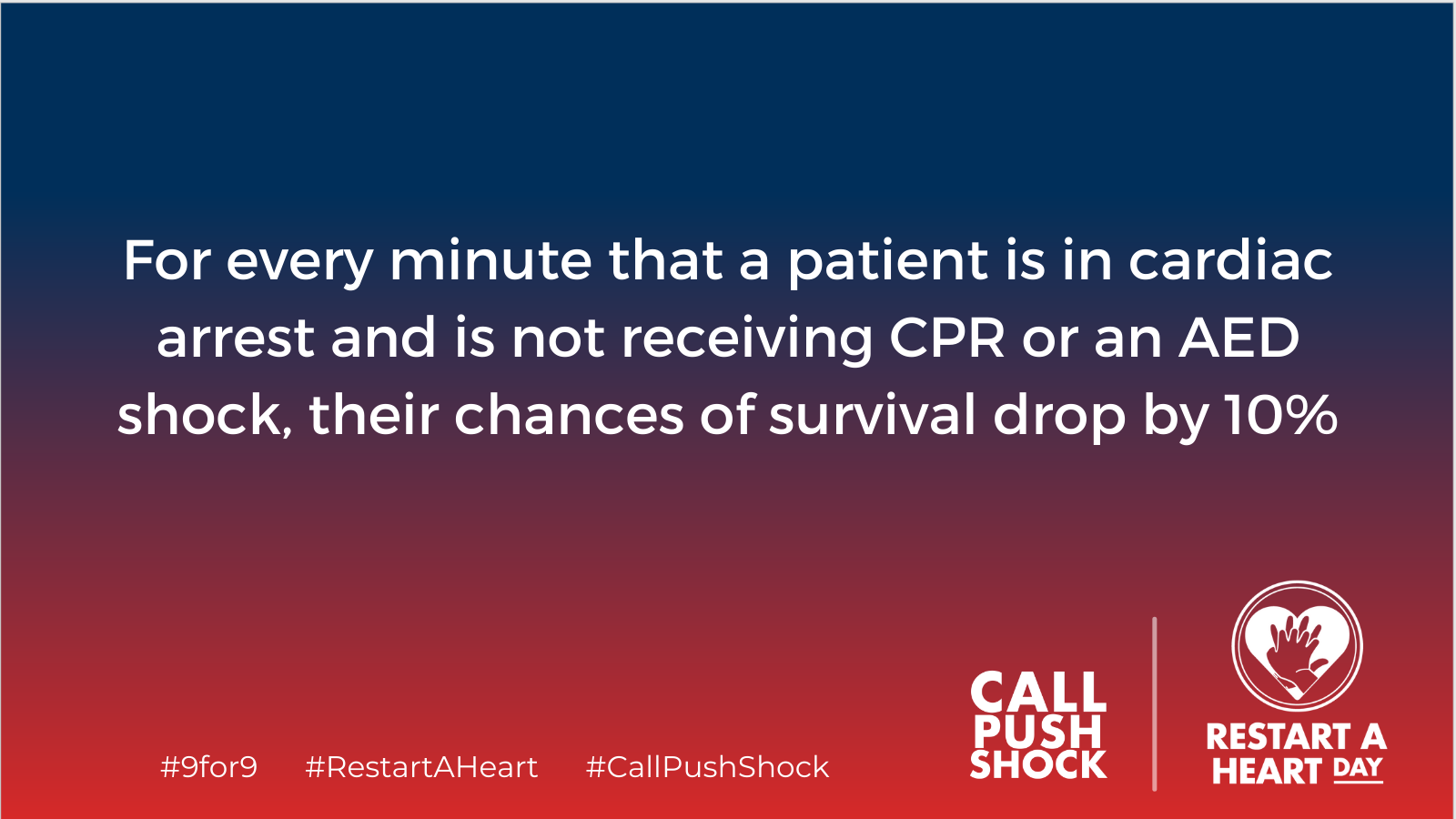
If you know how to restart a heart, you can help save a life.
-
Only one in 10 people survive cardiac arrest.
-
Cardiac arrest can affect people of every age.
-
8 in 10 out-of-hospital cardiac arrests happen in our homes.
What is cardiac arrest?
If you are in cardiac arrest, you will:
- collapse
- stop breathing normally
- your will heart stop
- your blood stops flowing
- your brain stops receiving oxygen.
How to restart a heart
You can easily restart a heart by following 3 simple steps: CALL PUSH SHOCK
CALL: Triple Zero
Ask for an ambulance. The operator will talk you through what to do
PUSH: start Cardiopulmonary Resuscitation (CPR)
Push hard and fast on the centre of the chest to the rhythm of ‘stayin’ alive’.
Don’t worry – you can’t do any harm.
Download and print these easy-to-follow CPR steps.
SHOCK: using An automatic external defibrillator (AED)
This is a portable machine that shocks the heart back to a rhythm.
Find out how to locate your nearest AED and how to register an AED.
What to do if you see someone in cardiac arrest
If you see someone in cardiac arrest, it is important to follow the DRSABCD steps outlined below.
Ensure the area is safe for yourself, others and the patient.
Check for a response by asking for a name and squeezing shoulders.
Call triple zero (000) for an ambulance. They will stay on the line and talk you through what to do.
Open mouth and if foreign material is present, place in recovery position and clear airway with fingers.
Check for breathing. Look, listen and feel for breath.
IF THE PATIENT IS UNRESPONSIVE and NOT BREATHING, begin CPR.
|
Start CPR
Remember – don’t be scared – it's better to have a go – you may just save their life. |
|
If there is someone else present, ask them to locate an Automatic External Defibrillator (AED). Do not leave the casualty to look for an AED if you are alone – continue with CPR. An AED is a lifesaving device that can give your heart an electric shock when it has stopped. An AED will guide you through the defibrillation process and audibly take you through each step. Don’t worry, the AED will not deliver a shock unless it detects a shockable rhythm (for example, the heart is not beating properly). Remember to download the AED Tasmania App to your phone and locate your nearest AED now. |
What is Restart a Heart Day?

Restart a Heart Day promotes awareness about the importance of knowing how to restart a heart. Each October, we hold training events to help Tasmanians learn CPR and help save a life.
Find out the latest in Restart a Heart day

